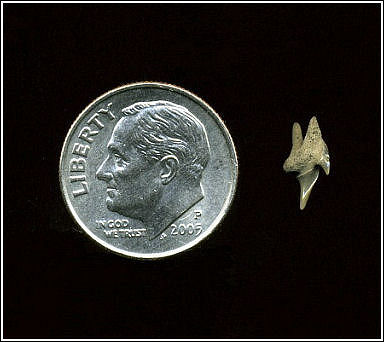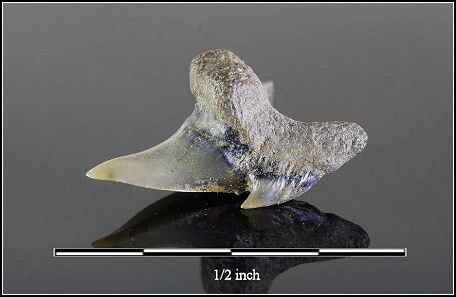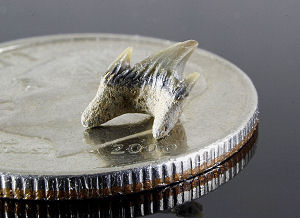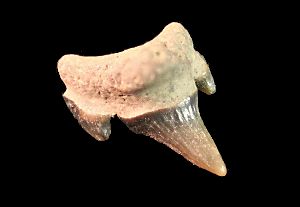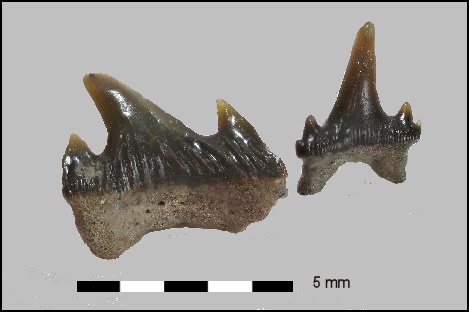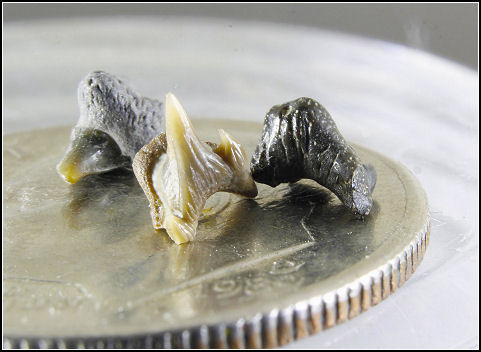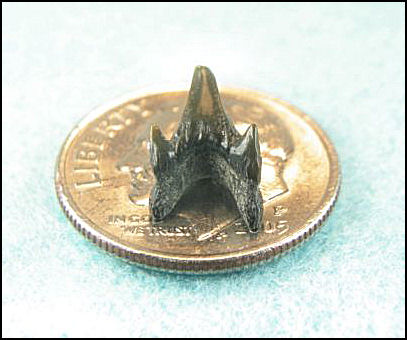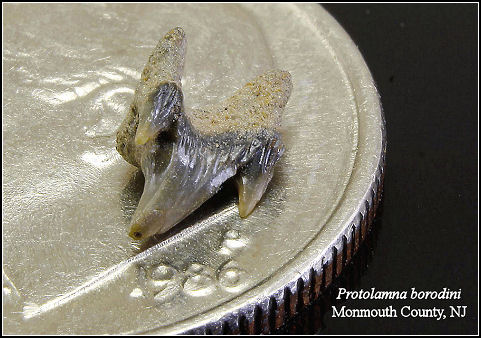|
Extinct Mackerel Shark The teeth of Protolamna borodini are small, averaging averaging about ¼ inch in length (6-7 mm) with a maximum size of just under ½ inch. This species has a deep “U” shaped root, a large single triangular cusplet on each shoulder and strong basal wrinkles on the labial face of the crown. The root has no nutrient grove and a strong lingual protuberance, which appears quite exaggerated. Because of their small size most specimens will fall through the standard ¼ inch screen. The large cusplets and root lobes seem particularly prone to damage. Protolamna borodini can easily be confused with the smaller catshark Scyliohinus.
Comparison of Protolamna borodini (Left) and
Typical finds. The long roots and cusplets are prone to damage.
Because of their small size these teeth will normally
fall through
|
|
